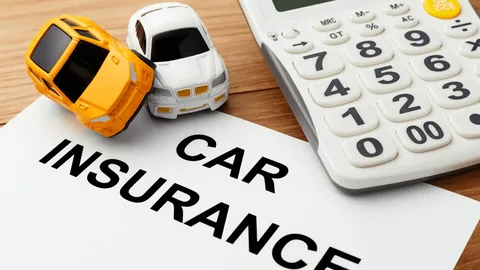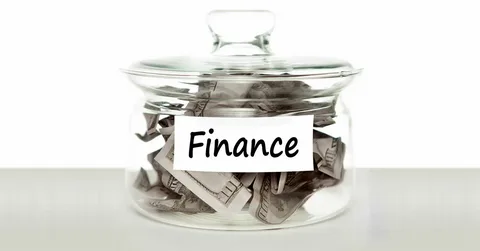The Importance of Emergency Funds: How Much Do You Need?
An emergency fund is one of the most crucial aspects of personal finance, serving as a financial safety net during unexpected circumstances. Whether it’s a medical emergency, job loss, or a sudden home repair, having an emergency fund ensures you’re financially prepared for life’s unpredictable moments. Understanding the importance of an emergency fund and determining how much you need is essential to building financial security. Let’s explore this topic in detail, breaking down why and how to create an effective emergency fund.
1. What is an Emergency Fund?
An emergency fund is a dedicated amount of money set aside to cover unforeseen expenses. This fund is distinct from other savings or investment accounts and should only be used for true emergencies, such as medical bills, job loss, or car repairs. Having this buffer helps you avoid dipping into your long-term savings or going into debt during financial hardships. Understanding what constitutes an emergency and keeping your fund accessible but separate is key to effective financial planning.
2. Why is an Emergency Fund Important?
An emergency fund acts as a financial cushion during times of uncertainty. Without one, people often resort to high-interest debt like credit cards or personal loans, which can further exacerbate financial problems. An emergency fund helps you cover unexpected expenses without disrupting your financial stability, providing peace of mind. Building an emergency fund is one of the most important steps in achieving financial independence. For further reading, consider exploring books like Your Money or Your Life by Vicki Robin, which discusses the foundations of financial security.
3. How Much Should You Save in an Emergency Fund?
Determining how much you need in your emergency fund depends on your personal financial situation. A general rule of thumb is to save three to six months’ worth of living expenses. This means if your monthly expenses are $2,500, your emergency fund should range between $7,500 and $15,000. However, the exact amount may vary depending on factors such as your job stability, health, and family size. For those with unpredictable incomes or in high-risk jobs, a larger emergency fund may be necessary.
4. Assessing Monthly Expenses
Before deciding how much to save, you need to calculate your essential monthly expenses. These include housing, utilities, groceries, transportation, insurance, and minimum debt payments. Non-essential expenses like entertainment or dining out don’t need to be factored in. Once you have a clear idea of your basic living costs, you can set a target for your emergency fund. Consider using budgeting tools or apps, like Mint or YNAB, to track your expenses accurately. Financial experts often recommend reviewing this regularly to ensure your estimates remain up to date.
5. Factors That Influence the Size of Your Emergency Fund
Several factors can influence the size of your emergency fund. Your job security plays a significant role—if you’re in a stable industry, you might need less than someone working in a volatile sector. Health risks, family responsibilities, and debt levels also affect the amount you should save. If you’re a homeowner, unexpected repairs could drain your resources, so a larger emergency fund might be required. Tailoring your emergency fund to your specific needs ensures you are better prepared for whatever life throws at you.
6. Emergency Funds and Economic Downturns
The COVID-19 pandemic highlighted the critical importance of having a robust emergency fund. Many people faced sudden unemployment, reduced hours, and medical emergencies, which caused financial distress. During economic downturns, jobs become scarcer, and expenses may rise unexpectedly. An emergency fund can help you weather these economic storms without having to liquidate investments or rely on high-interest loans. Studies like The Economic Well-Being of U.S. Households in 2020 by the Federal Reserve can offer insights into how different financial strategies, like emergency funds, can shield against broader economic uncertainties.
7. Building an Emergency Fund from Scratch
Building an emergency fund from scratch can seem daunting, but it’s possible with discipline and a clear plan. Start by setting small, achievable savings goals, such as saving $500 or $1,000 initially. Automating your savings by setting up automatic transfers from your checking account to your savings account can make the process more manageable. Once you reach your initial goal, continue contributing regularly until you hit your target. For further guidance, books like The Total Money Makeover by Dave Ramsey provide a step-by-step plan for building financial resilience, including how to prioritize emergency funds.
8. Where to Keep Your Emergency Fund
Deciding where to keep your emergency fund is as important as building it. The ideal emergency fund should be accessible, but not too easy to dip into for non-emergencies. High-yield savings accounts are a popular choice because they offer liquidity while earning interest. Some people prefer keeping their emergency fund in a separate account to reduce the temptation to spend it. Avoid riskier investment options, like stocks, for your emergency fund, as you need the money to be safe and available when emergencies arise.
9. Avoiding Common Pitfalls
Many people make the mistake of not setting aside enough or borrowing against their emergency fund for non-essential expenses. Avoid these pitfalls by setting clear rules for when to use the fund and replenishing it immediately after use. Another common issue is underestimating the amount needed, especially in situations like prolonged unemployment or significant health issues. A well-prepared emergency fund accounts for potential long-term disruptions. Consider reviewing expert advice from financial planners to avoid these mistakes.
10. Emergency Funds vs. Savings for Other Goals
It’s essential to differentiate between your emergency fund and other savings. For instance, savings for a vacation, home purchase, or retirement should be kept in separate accounts. Your emergency fund is meant for unplanned financial events, not for planned expenses. Keeping these funds separate ensures that your emergency fund remains intact when real financial emergencies arise. Books like Smart Women Finish Rich by David Bach offer insights into compartmentalizing savings to meet various financial goals.
11. Replenishing Your Emergency Fund
If you ever need to use your emergency fund, it’s important to replenish it as soon as possible. Emergencies can occur more than once, and having an underfunded or depleted account can leave you vulnerable. After using your emergency fund, adjust your budget and allocate a portion of your income toward building it back up. Some financial experts recommend temporarily reducing other savings contributions until the emergency fund is restored.
12. Should You Invest Your Emergency Fund?
Some people wonder whether they should invest their emergency fund to earn higher returns. While it may seem appealing, investing your emergency fund in volatile markets can be risky. Stocks, bonds, or mutual funds may provide higher returns, but they also carry the risk of loss, especially during market downturns when you might need the money most. Keeping your emergency fund in a low-risk, liquid account ensures that it’s available when you need it, without the fear of losing value.
13. How to Adjust Your Emergency Fund Over Time
Your emergency fund should evolve as your financial situation changes. For instance, if you get a raise, have children, or take on a mortgage, you may need to increase the size of your fund. Regularly reassessing your emergency fund ensures that it continues to meet your needs as your expenses grow. Financial milestones often require adjustments in your financial safety nets. Consider reading studies or whitepapers from financial institutions that highlight how different life stages impact emergency fund needs.
14. Emergency Funds for Families
If you have a family, your emergency fund needs will be higher due to increased expenses, such as childcare, education, or healthcare. A good rule of thumb is to aim for at least six months’ worth of expenses, but larger families may need more depending on their situation. The cost of medical emergencies or job loss can be significantly higher when multiple people depend on a single income. Online resources, such as family budgeting calculators, can help you estimate the right amount for your household.
15. Conclusion
Building and maintaining an emergency fund is one of the cornerstones of financial stability. It ensures that you’re prepared for life’s uncertainties, providing peace of mind and protecting your financial well-being. While the process may seem daunting at first, setting clear goals, automating savings, and making disciplined financial decisions can help you achieve a solid emergency fund. Whether you’re just starting your financial journey or looking to enhance your savings strategies, an emergency fund remains an essential part of any financial plan.











3 thoughts on “The Importance of Emergency Funds: How Much Do You Need?”